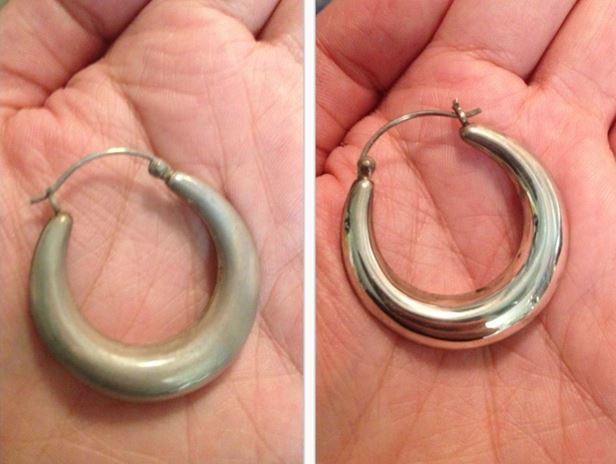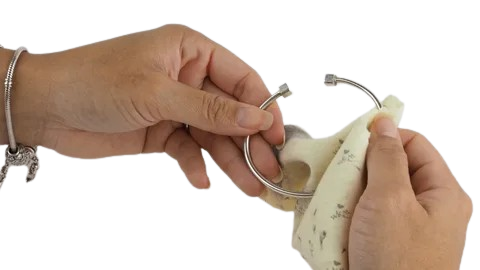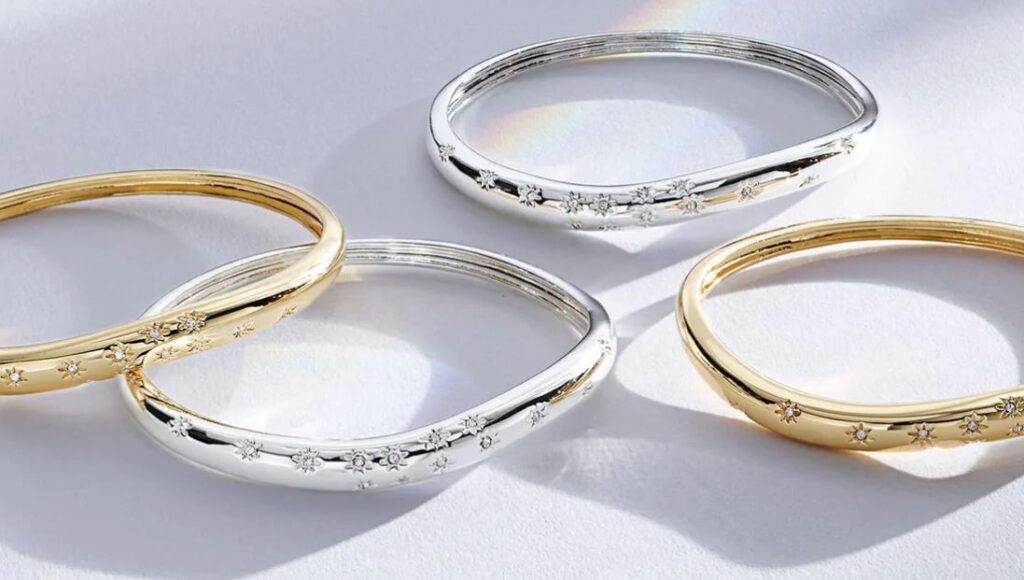What is Tarnishing
Tarnishing is a chemical process in which metal the outer layer of a metal reacts with the moisture and carbon dioxide present in the layer. This results in the formation of a duller and dimmer out layer of the metal. If this chemical reaction persists, it can lead to different color formation in different metals.
For example on tarnishing, silver turns black and metals with copper such as brass and bronze turn green.
If not taken proper care of your jewelry, it’s life can be decreased and you will get into jewelry appraisal problems as well. In short, tarnishing is one of the biggest concern of jewelry owners.
In this article we’ll go through what is tarnishing, what tarnishing does to jewelry, what metals does tarnish and how to prevent tarnishing.
Why Tarnishing Happens?
Before taking a look at the science behind tarnishing, we need to understand what is oxidation. It is a chemical reaction in which a metal reacts with atmospheric oxygen and forms a layer of oxide on its surface. In case of silver, it is silver oxide and in copper it is copper oxide.
Let’s see a simple example of how copper forms copper carbonate also known as patina.

Copper from copper or brass jewelry reacts with oxygen from air and forms copper oxide. It can further react with carbon dioxide and form green colored copper carbonate known as patina. This process is generally slow and can take some time.
Another factor behind tarnishing is the presence of sulfur compounds in the air such as hydrogen sulfide. This gas is highly reactive and reacts with silver to form silver sulfide which is black in color. That’s why silver appears black when it is tarnishing.
Metals Prone to Tarnishing
There is not a long list of metals which are prone to tarnishing. Any metal containing high amounts of silver or copper will be subjected to tarnishing from time to time. These metals make active chemical bonds with materials present in the air. List of silver and copper alloys contain:
Other metals such as stainless steel, white gold, rhodium jewelry, gold filled jewelry, titanium, tungsten etc. do not tarnish. When it comes to plated jewelries, if the top layer wears off exposing copper or silver, it will lead to tarnishing.
Causes of Tarnishing
There are numerous causes of tarnishing and a combination of all can fasten the process of tarnishing. Some of these factors are:
1. Moisture
Water plays an important role in accelerating the tarnishing process. Coastal areas tend to have more moisture in air, so you can expect faster tarnishing process of your silver or copper jewelry there. Apart from this, saltwater also acts as a contributor in it. Whenever you go on to beaches, remember to put off your jewelry before bathing.

2. Airborne Particles
Airborne particles such as dust and dirt can absorb some amount of moisture in it. And whenever your jewelry comes in contact with those dust particles, moisture reacts quickly with metal. This thing can lead your silver or copper jewelry to tarnishing quickly.
3. Sweat and Oils
Our sweat contains different salts which combine up with outer surface of jewelry to make it look tarnished. Certain oils and lotions also contribute to this factor. All it takes for silver to tarnish is to do some chemical reactions.
4. Cosmetic Items
Lotions and creams are another aspect of tarnishing. These cosmetic items contain chemicals which react with silver or copper leading to your skin turning green.
5. Pollutants
Cities generally have higher amounts of highly reactive atmospheric gases containing sulfur and nitrogen oxides. These oxides are highly reactive with some of the metals like silver. Whenever they react with silver, they get top layer corrode.
How to Identify a Tarnishing Metal
Certain changes can appear on the surfaces of a metal going through tarnishing.
1. Color Change
Different metals show different color change while tarnishing. Silver turns into yellowish, brown or black color depending on severity. Whereas copper forms a green layer called patina. Other metals with high percentages of copper such as brass and bronze share similar traits. Gold alloys also show some discoloration in terms of dull.
2. Change in Touch
Metals showing obvious signs of tarnishing such as silver and copper will lose their shiny and smooth surface feel. Rather blisters or powdering start to form on surface due to oxidation and corrosion. A quick comparison between a tarnishing and non-tarnishing metal can also help in figuring out.
3. Age and Usage
If you’re using your silver or copper jewelry for quite a while now and haven’t cleaned it yet, then there is high susceptibility that your metal is tarnishing. Old metallic jewelry or high exposure to external factors can fasten the process of tarnishing.

How to Prevent Tarnishing from Happening
There are some precautionary measures which can be used to prevent tarnishing.
- Don’t wash hands while wearing jewelry.
- Remove your jewelry while washing clothes and utensils.
- Save your jewelry from lotions and skin oils.
- Avoid direct contact of jewelry with chemicals such as perfumes, detergents, washing soaps etc.
- Use protective coatings or sealant on copper jewelry.
- Remove your jewelry before swimming.
- Store your jewelry in a clean dry place.
- Use anti tarnishing bags in storage boxes.
How to Remove Tarnishing of a Metal
Once your metal jewelry has been tarnished, the only thing you can do is to remove that tarnish. This process typically involves usage of a chemical such as baking soda and lemon juice’s mixture in a thick paste.
Next step is to apply this mixture on your tarnished jewelry so that it covers all of the areas of the jewelry. Kindly remember that if your jewelry has diamonds, diamond dust or other gemstones, don’t apply this paste on it. Otherwise stones can lose their shine.
After waiting for 5 minutes, now you can wash the jewelry with warm water and afterwards apply a sealant as described above.

Chemicals used to Remove Tarnishing
Apart from home chemicals like baking soda, specialized chemicals are also used for the removal of tarnishing. As these chemicals are specifically designed for this process by reputable brands, you can find them at any chemical store. Some of the popular tarnishing removal chemicals are:
- Flitz Brass and Copper Tarnish Remover
- Tarn X Tarnish Remover
- Hagerty Instant Silver Dip
Common FAQ’s
Does tarnishing turn finger green?
Yes, Tarnishing can turn your finger green.
Are Tarnishing removal chemicals expensive?
No. You can get one of these chemicals for about $11 from an online store.
Can I use any cloth for jewelry cleaning?
No. It is recommended to always use special designed soft cloth for jewelry cleaning. It can protect your jewelry from any scratches or gemstone lose.
Conclusion
Tarnishing is a natural process in which some of the metals lose their shine. Metals like copper and silver are the top metals prone to tarnishing. Biggest causes of tarnishing are high time exposure to air, high humidity areas and non cleaning of jewelry.
This process can be reversed by using home chemicals such as baking soda and lemon juice. In order to save your jewelry from tarnishing, you have to use some sort of sealant. Common sealants available in the market are wax, copper polish and sealant sprays. You can use anyone of these which will save your metal for at least a period of 2 to 3 months.

